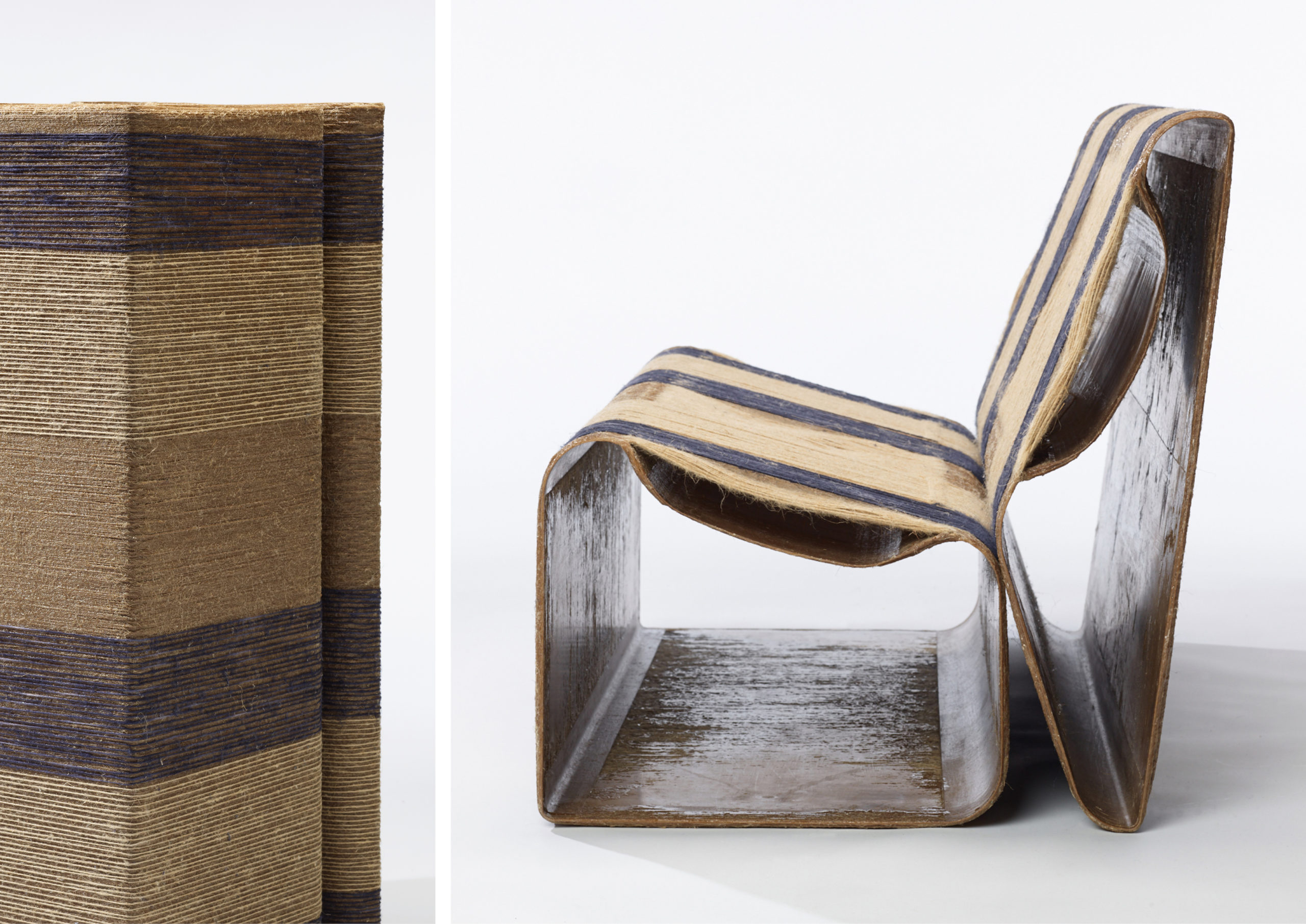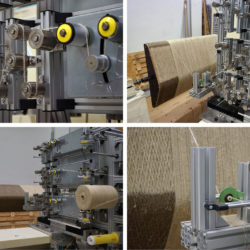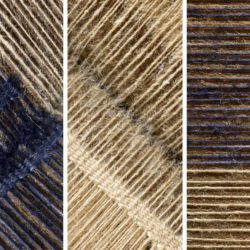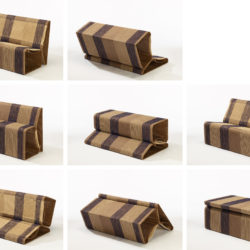Faser.Faden.Filament.
Description
The project analyses the process of filament winding and visualises possible potentials for the application of this manufacturing process in product design. The resulting study consists of two modules connected by a hinge made from textile and can thus be used in different configurations. The components were manufactured from hemp yarn using a filament winding machine. Certain areas were reinforced with a matrix material. The resulting object does not predefine a fixed usage scenario but rather allows for experimentation and the ability to experience the performance of the newly created material and construction system with your own body. Thereby, the different surfaces and applications of material can also be explored. Depending on the position, you sit on soft or hard surfaces, straight or at an angle, with or without backrest.What is the Topic?
Every day, we are in contact with fibres, yarns, or textiles: They are an important part of our world. Yet we are often unaware of their significance for our culture and everyday life. Today fibres are no longer only used to produce classic textiles such as garments, cloths, and carpets. For example, fibre-reinforced breathing air bottles made from carbon and fibreglass enable firefighters to work at high temperatures less restricted by the weight of their protective equipment. In automobiles, trains and airplanes, components made of fibre composites are used to reduce weight and thus ultimately reduce emissions. Due to the constant progress and development, especially in composite materials and synthetic fibres, textiles are constantly advancing into new areas of application. The aim of the project is to raise awareness for the enormous potential of mostly forgotten natural fibres in these material systems. The construction from individual threads also makes the production process visible when looking at the object. New material categories are created and as a result, innovative applications in product design can be discovered.
Why does it look like this?
The development of a new material and construction system enables new product aesthetics: soft threads or strings are combined with firmly laminated fibre composites and take on new functions. By combining a highly technical process with the low-complexity and familiar yarn made of hemp fibres, a new understanding of materials is created. This new material culture also conveys a new relationship to quality and product aesthetics. The created object is partly rough, partly smooth, some parts are hard, some are soft. These conditions blur the usual boundaries between different material categories. In addition, the resulting surfaces have an independent quality: Traces of use occur as a natural patina, which can lead to a stronger emotional connection to products. The natural fibres allow for products that communicate their production method and convey an understanding of their structure. In addition, and despite the new production method and appearance of the study, there is a certain familiarity with the object, which is created by the natural and common material. The hinge is made of a different colour and is thus clearly recognisable as the connecting element between the two basic modules.
What is special?
The study creates a new material category and product culture: On one hand, the components appear technical due to the production on a CNC-controlled machine and their shape. On the other hand, the hemp yarn used creates approachability, warm surfaces, and a partly handcrafted character. The integrated textile hinge made it possible to design an object from only two components (hemp yarn and matrix material) that has many different surfaces and encourages visual and haptic discoveries. In some positions the object is static, in others it is possible to play with the body weight, the construction seems light and flexible.
What is new?
The fundamental intervention in the production process with carbon or fibreglass is the shift to a material system made of natural fibres with completely different properties. This is made possible by using the technology for product design, which places fewer demands on the components than, for example, aerospace or industrial applications. The decision was made to use hemp fibres because hemp plants can also be cultivated in Germany and Europe with little use of resources. Hemp has played an important role as a crop plant in the last millennia. Only in the last century, due to the emergence of man-made fibres and legal regulations, has it almost completely disappeared from the European market. By substituting the filament, the production of fundamentally new topologies was made possible and innovative scenarios for filament winding could be created. The integration of functions into the components, such as flexible fabric surfaces or hinges, also creates new potential for the process.




